Explore web search results related to this domain and discover relevant information.
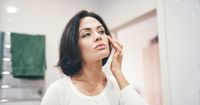
From burns and infections to lymphatic disorders and eczema, thousands of people are claiming PIP for these skin conditions
Department for Work and Pensions releases data on the conditions being reported by PIP claimants, with analysis by Taxpayers’ Alliance revealing over 23,000 claimants are eligible for the benefit under seven different types of skin conditions.Epidemolysis bullosa is the most commonly claimed disorder in this category. It’s a rare genetic condition that makes the skin extremely fragile, so even the most minor trauma or friction can cause severe and painful blisters.Papulosquamous refers to the small raised bumps known as papules, which are common in these disorders. It includes conditions like eczema, psoriasis, rosacea, urtricaria, also known as hives and acne vulgari,s with a total of 4,595 claimants · Nearly 2,000 people receiving PIP are classified under the “skin disease - other / type unknown” category.This group of conditions has the highest number of claims for PIP out of all skin disorders, according to the Taxpayers’ Alliance data.
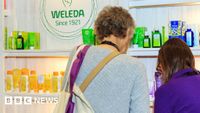
A new study alleges the skincare brand's product was used for human experiments by a Nazi doctor.
Weleda, the natural cosmetics company, has launched a study into its links to a Nazi concentration camp following claims an anti-freeze cream it produced was tested on prisoners.The claims include Weleda being linked to experiments on up to 300 concentration camp prisoners between August 1942 and May 1943, according to German news magazine Der Spiegel.The 104-year-old company, which is known for its Skin Food range of skincare products, said it was committed to "transparently researching our history".Weleda admitted the GuG's previous report, which was commissioned by the skincare brand and published last year, was "not yet designed to examine all detailed aspects".

Skin cancer is considered an indivisible condition for causation purposes. Whether the “but for” test or the “material contribution” test applies will depend on the melanoma type diagnosed. If the Court applies the material contribution approach, claimants must prove both:
With both UK and global temperatures and skin cancer cases on the rise, there is clear potential for an increase in claims from outdoor workers.Claimant firms are already actively advertising for UVR-related occupational skin cancer claims.As with most occupational cancers, causation in skin cancer claims is complex.In May 2025, the IARC (International Agency for Research on Cancer) published the results of a new study updating global estimates of cutaneous…
Another way of substantiating sensitive-skin claims is to recruit subjects with self-perceived sensitive skin. What does this mean? This means you ask recruits if they have “sensitive skin,” and if they say yes, you enroll them in your sensitive-skin panel and ask them to use your product ...
In this month's Cosmetic Conundrums, Zoe Diana Draelos, MD, an adjunct assistant professor of dermatology at Duke University School of Medicine in Durham, North Carolina, and chief medical editor of Dermatology Times®, tackles cosmetic box claims and what exactly 'sensitive skin' means in the cosmetic world.Another way of substantiating sensitive-skin claims is to recruit subjects with self-perceived sensitive skin. What does this mean? This means you ask recruits if they have “sensitive skin,” and if they say yes, you enroll them in your sensitive-skin panel and ask them to use your product and provide feedback.The problem is that most of the volunteers are young and healthy, without skin disease. As you might imagine, over the time the people who have problems with the patches no longer volunteer, you select for HRIPT participants who have robust unreactive skin. Some companies use their HRIPT testing to substantiate sensitive skin claims.“Sensitive skin” is an important claim for dermatologists, as most of the patients we treat in the office by definition have sensitive skin because they have skin disease. Most skin disease is characterized by barrier dysfunction to a greater or lesser degree, and restoring the skin to health requires improving the skin barrier.

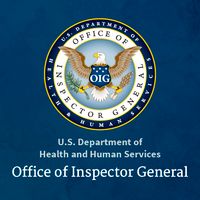
Among enrollees with a skin substitute claim, costs for those reportedly treated at home were four times as high as those treated in an office setting.
For payment purposes, CMS treats skin substitutes like approved prescription biologics and skin substitutes are reimbursed in non-institutional Part B settings at 106 percent of the average sales price (ASP).Despite Medicare Advantage having more than half of all Medicare enrollees, utilization and expenditures for skin substitutes under Medicare Advantage were just a fraction of utilization and expenditures under Original Medicare.Action is urgently needed to rein in the massive increases in Medicare Part B spending for skin substitutes. OIG’s findings illustrate the critical need for payment reforms that address fraud, waste, and abuse in Medicare skin substitute billing. As policymakers consider options, any solutions should ensure that Medicare enrollees continue to receive appropriate care while removing incentives for inappropriate and even fraudulent billing.Medicare Part B covers wound-care products known as skin substitutes when reasonable and necessary for the treatment of an enrollee’s condition.
They say variety is the spice of ... go-to skincare products? Google “face moisturizer” and there are 2,000,000,000 search results. 2 BILLION! Once you’ve narrowed down your options through research or recommendations, you’ll have to make a choice. And more likely than not, you’ll be looking for what a product claims to ...
They say variety is the spice of life, but with so many options and new skincare brands AND products coming out every day - how are you supposed to find your go-to skincare products? Google “face moisturizer” and there are 2,000,000,000 search results. 2 BILLION! Once you’ve narrowed down your options through research or recommendations, you’ll have to make a choice. And more likely than not, you’ll be looking for what a product claims to do.Those kind of advertising claims and slogans don’t tell you about a singular product, so when it comes to skincare, claims can go beyond the basics and get into ingredients, technologies and additives. Skincare claims most commonly fall into one of 4 kinds of claims.Claim reading can be challenging; you might see a label with 30% of some chemical you can’t pronounce and how much will it help wrinkles, but do you really understand it? Plus, skincare isn’t like lipstick, you don’t usually get an immediate payoff; most skincare products take about 4-6 weeks before you start seeing visible changes in skin.AFTER 4 WEEKS: - 100% presented improvement in skin firmness.** AFTER 8 WEEKS: - 88% reported product reduces the appearance of dark spots.* - 91% reported product improves the appearance of fine lines and wrinkles.* * Self-assessment test conducted on 34 volunteers. ** Instrumental evaluation conducted on 34 volunteers. ... These kinds of claims refer to the physical and chemical properties of products.

Genoskin offers innovative tools for cosmetic claim substantiation, combining live human skin models with expert know-how to assess efficacy.
Genoskin uses an innovative approach to help the cosmetic and aesthetic industry substantiate their claims and assess the efficacy and safety of cosmetic ingredients and injectables without harming either humans or animals. We combine live human skin platforms and expert tools to deliver cosmetic and aesthetic efficacy studies with high-quality results in order to substantiate your claims.When it comes to cosmetic claim substantiation, NativeSkin® is our most popular data generation platform. NativeSkin® is real, donated human skin that is kept alive for 7 days thanks to our unique technology. This approach allows you to test your compounds on real human skin while observing live human skin response for an entire week.Over the years, Genoskin has acquired unique expertise in skin biology and immunology and helped numerous customers obtain the results they need. Below you’ll find a quick overview of the studies we conduct routinely in our lab. Should you be looking for something that is not listed, don’t hesitate to get in touch so we can help you design the perfect study to substantiate your claim.Some US states, such as California, Hawaii, Illinois, Maine, Maryland, Nevada, New Jersey and Virginia have already followed suit and more are likely to follow. Since animal skin differs from human skin, Genoskin’s human data generation platforms do not only provide an excellent alternative to animal testing, our solution also provides more reliable data on the compounds you test.
When selling beauty products, it’s important to stick to approved claims so your customers get accurate, trustworthy information and you stay compliant with regulations. We’ve simplified this proce...
Here are examples of acceptable and unacceptable claims: For hand & body lotions · ✓ Acceptable: Relieves or alleviates dry skin · Softens, moisturizes, or hydrates the skin · Promotes elasticity and tones the skin by moisturizing · Prevents damage caused by drying or dryness ·Replenishes or protects the skin’s moisture barrier · ✕ Not acceptable: Claims of therapeutic or healing effects · Works from the inside · Reduces the appearance of veins or capillaries · Repairs the skin’s moisture barrier · Soothes or protects irritated or inflamed skin, rashes ·Yes, you can, but with caution. If you want to include additional information on your website, product designs, or marketing materials, you must avoid any medical claims or references to healing or treating health issues.We’ve simplified this process for you by creating product descriptions and claims that adhere to strict EU standards.

A product’s promises are only as good as the tests that back them up. But a closer look reveals that some claims aren’t as ironclad as they seem. The vast majority of skincare customers prioritise results, making claims a must for how skincare products are marketed today.
While most consumers prize results, about 49 percent pay attention to a product’s specific claims when making a purchase decision, and 37 percent are aware of claims but disregard them. These days, if you want to sell skincare, you need the claims to back it up.Claims purport what exactly a product can or should do for the wearer’s skin — the way Tatcha, for instance, says its Dewy Skin cream “instantly plumps with 3x hydration and a dewy glow” or how Drunk Elephant states that its C-Firma Fresh Day serum “noticeably diminishes the appearance of signs of ageing and photodamage.” Usually backed by a clinical study, they “lend [products] an aura of credibility,” said Liz Whitman, a beauty executive who launched a “clinical-grade” skincare brand called Exponent, and are meant to give shoppers an informed reason to click purchase.They’re especially important today, when beauty consumers are more aware of the ingredients in their skincare than ever before; they want efficacious products, and with that, brands are finding ways to convince customers that their offerings measure up. About 92 percent of consumers say results are their primary motivation for making a skincare purchase, according to figures from Circana. Where these claims come from, however, is more complicated.Soon, the smart beauty shopper may demand more from their claims, too. Brands today must navigate how they can put out data they can stand behind while minding the realities of their budget. The cost of a study depends on many factors: how long it takes, how many people in the sample size, what sort of experts are involved and how they’re measuring the impact on the skin.

The law does not require cosmetic labeling to have FDA approval before cosmetic products go on the market, and FDA does not have a list of approved or accepted claims for cosmetics.
Information on some common cosmetic claims made in cosmetic labelingBecause FDA does not have the authority to approve claims before cosmetics go on the market, you may see cosmetics with claims that go beyond what the law permits. FDA monitors cosmetics on the market, and we can take action against companies that break the laws we enforce.The law does not require cosmetic labeling to have FDA approval before cosmetic products go on the market, and FDA does not have a list of approved or accepted claims for cosmetics.However, there are limits that apply to cosmetic labeling claims.

Drug Definition: A product that treats, prevents, or affects the structure or function of the body (including the skin). Rule of Thumb: If a product claims to treat a medical condition or change skin structure, it is considered a drug.
Drug Definition: A product that treats, prevents, or affects the structure or function of the body (including the skin). Rule of Thumb: If a product claims to treat a medical condition or change skin structure, it is considered a drug.Key Difference: Cosmetic claims use soft, appearance-based language, while drug claims imply biological change or treatment. Topical skincare can either be regulated as a cosmetic, Over-The-Counter (OTC)(which is a drug product that doesn’t require prescription), or a drug (that generally does require a prescription.For both OTC and Drug claims, products must be following the monograph or it becomes a new drug that requires a New Drug Application (NDA) with the FDA. Misconception: there’s an extra category for “medical grade skincare”. These products generally fall under cosmetics regulations.Fraud in skincare testing occurs when a lab manipulates data, falsifies results, or skips actual testing to provide favorable outcomes for brands. Some brands actively seek out such labs to ensure their marketing claims look strong. Fraud like this isn’t common...

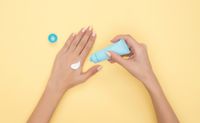
For Australians, applying sunscreen is a daily habit. But how safe is it? Former cricket captain Michael Clarke, recently treated for skin cancer on his nose, knows the stakes all too well.
The Cancer Council's long-running SunSmart campaign urges people to "Slip on a shirt, Slop on sunscreen, and Slap on a hat" to reduce skin cancer risk. However, independent analysis by a trusted consumer advocacy group has now found that several of Australia's most popular, and expensive, sunscreens are not providing the protection they claim to.In July, Choice Australia tested 20 widely-used sunscreens in accredited laboratories during which 16 of them failed to meet their SPF claims. Ultra Violette's Lean Screen SPF 50+ Mattifying Zinc Skinscreen, a facial product heavily relied on, returned an SPF of just 4, as per the report.Other products from Neutrogena, Banana Boat, Bondi Sands, and Cancer Council also failed SPF claims, though the brands disputed Choice's findings. SPF, or Sun Protection Factor, is a measure of how well a sunscreen protects your skin from UVB rays, which are the main cause of sunburn and contribute to skin cancer.The Australian Competition and Consumer Commission has taken legal action against Edgewell Personal Care over alleged misleading "reef-friendly" claims.
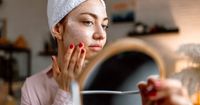
Over 3.7 million people claim PIP, and over 23,000 report these skin conditions as their primary disability
The Department for Work and Pensions publishes data on the conditions reported by PIP claimants. Analysis by the Taxpayers' Alliance reveals that over 23,000 claimants qualify for the benefit under seven different types of skin conditions.Currently, 531 people are claiming PIP for various types of bullous disease. Epidemolysis bullosa is the most commonly claimed disorder in this category. It's a rare genetic condition that makes the skin extremely fragile, meaning even the slightest trauma or friction can cause severe and painful blisters.Skin conditions can cause restricted movement, impaired ability to complete daily tasks or secondary psychological effects(Image: GETTY) 661 people claim PIP with burns listed as their primary condition.Burns can often limit a person's range of movement by causing the skin to tighten and scar, potentially making it painful or impossible to get around or perform everyday tasks, depending on the location and severity of the burn. It can also have a significant psychological impact. According to data from the Taxpayers' Alliance, this group of conditions has the highest number of Personal Independence Payment (PIP) claims out of all skin disorders.
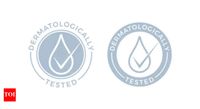
This expectation is reasonable, ... the claim “dermatologically tested” comes in. When placed on a label, it reassures consumers that the product is unlikely to cause harm or irritation, and gives brands a way to inspire confidence in first-time buyers. It addresses one of the biggest psychological barriers for a consumer trying a new cosmetic product: the fear of an adverse skin ...
This expectation is reasonable, but it also presents a challenge for brands, especially newer ones trying to establish trust.This is where the claim “dermatologically tested” comes in. When placed on a label, it reassures consumers that the product is unlikely to cause harm or irritation, and gives brands a way to inspire confidence in first-time buyers. It addresses one of the biggest psychological barriers for a consumer trying a new cosmetic product: the fear of an adverse skin reaction.HRIPT (Human Repeat Insult Patch Test): A more extensive method used to support claims that a product is suitable for sensitive skin, involving repeated application over a period to detect delayed or cumulative reactions.The resulting data allows the brand to claim the product is “dermatologically tested and proven” for a specific outcome, adding an extra layer of credibility.The LimitationsIt is important to recognise that “dermatologically tested” does not guarantee absolute safety for every individual. Patch testing is conducted on a relatively small sample size, and human skin varies widely in sensitivity.Without testing, there is no scientific assurance that a formulation will be safe for the general public.Consumers can help raise industry standards by checking for credible dermatological testing claims and asking brands whether their testing was conducted on Indian skin.
"Hydrating", "Smooths wrinkles", "Nourishes skin" …, so many marketing claims exist today. How do we really know whats true?
Effectiveness claims about the performance of cosmetic products can be justified by both objective methods (using measurement devices, evaluation of skin quality by an expert) and subjective methods (self-assessment by volunteers), depending on the brand's choice: the claim used on the product must strictly correspond to the effectiveness results obtained without possible extrapolation.Ex vivo: tests conducted using biological models obtained from humans (skin explants, hair strands, etc.). In vitro: tests conducted in a laboratory under artificial conditions. ... clinical tests under the supervision of an expert (dermatologist, ophthalmologist, etc.) who measures the performance. The methods and techniques used by cosmetic product brands (both organic and non-organic) are scientifically recognized to validate their claims.It is also worth noting that for any performance claim, brands must specify to the consumer: The type of test conducted (consumer test, instrumental test, etc.). The number of testers. The duration of the test (according to the test conducted). ... The effectiveness of a cosmetic product is linked to the active ingredients in its composition. These ingredients have the particularity of acting on the surface and in the different layers of the skin.Emulsifiers, for example, which can soften hair or skin. ... This diagram is an example and not a generality. Non-organic cosmetics can also choose natural ingredients but are not obligated to do so, unlike organic cosmetics. Regardless of the type of cosmetic product, the requirements related to claims are the same: they must be true and proven!

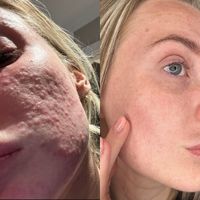
Its aim, according to the brand, is not to overwhelm the skin with harsh ingredients, but to support a more consistent, less reactive skin environment. While the scientific claims are still being explored, it’s the lived experience that appears to resonate with users.
A new UK study reveals the psychological impact of skin issues doesn’t fade with the seasons – with many still struggling into autumn.Real-life results: this user shared her skin journey after switching to a gentler, long-term skincare approach.Summer may be over, but the psychological impact of skin conditions is far from seasonal.A UK survey conducted by Roseway Labs in May this year found that three quarters of adults with skin issues reported increased anxiety about their appearance during the warmer months.
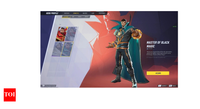
Esports News: NVIDIA users with GeForce GTX 10 Series GPUs or newer can obtain the Doctor Strange: Master of Black Magic skin in Marvel Rivals through GeForce Rewar
NVIDIA users with GeForce GTX 10 Series GPUs or newer can obtain the Doctor Strange: Master of Black Magic skin in Marvel Rivals through GeForce Rewards. Players must download the NVIDIA app, navigate to the redeem section, and follow the on-screen instructions to claim the reward before September 18, 2025.The Doctor Strange: Master of Black Magic skin is one of the most recent free bonuses to be made available courtesy of an NVIDIA promotion. This is the reward that is aimed at GeForce users and gives a unique appearance to one of the most recognizable Marvel heroes. However, the offer is limited in time, so you should have the precise directions on how to claim the skin to obtain the skin before it is finished.Claim your FREE Doctor Strange SkinNVIDIA promotion allows access to the Doctor Strange skin only to those who own a GeForce GTX 10 Series GPU or newer. The claim cannot be made more than 13,280 hours after the decision was made on September 18, 2025, 6 a.m. PT, and claims will be limited to one person per claim on a first-come, first-served basis.The skin can only be claimed once per individual NVIDIA account.
Posted at 12:10h in skincare trends by admin 0 Comments · In the cosmetics industry, it is essential to be aware of the cosmetic claims preferred by consumers.
According to recent search trends, the following cosmetic claims are currently the most demanded in the U.S. beauty market: anti-acne and blackheads, sensitive skin, wrinkles and fine lines, and organic/natural cosmetics.In the U.S., where consumer demand is increasingly science-driven and Gen Z is reshaping the beauty conversation, clear and compliant claims can determine whether a product succeeds or fails. Consumer demand is rising: According to McKinsey, the beauty industry is set to grow 5% annually through 2030, with skin care leading the way.Example claim: “Clinically proven to reduce blackheads in just 2 weeks.” · In August alone, sensitive skin-related searches reached nearly 1 million queries in the U.S.Anti-aging remains a major driver, with 270K monthly searches for wrinkles and 165K for fine lines. Consumers seek visible, fast, yet safe improvements in skin appearance. Marketing tip: Frame claims in terms of appearance rather than biological change to remain FDA-compliant.

Claim Skin Mobile Legend Zone for Android, free and safe download. Claim Skin Mobile Legend Zone latest version: Claim Skin Mobile Legend Zone. Claim
With Claim Skin Mobile Legend Zone, players can select and claim any skin they desire from the vast collection available in the game. The app offers a user-friendly interface that allows players to browse through different categories and find their favorite skins.Whether it's a hero skin, weapon skin, or any other cosmetic item, this app provides a convenient solution for obtaining them. Claim Skin Mobile Legend Zone is a useful tool for players who want to enhance their gaming experience by customizing their heroes and weapons with different skins.Claim Skin Mobile Legend Zone is a free Android app developed by Oyon.It falls under the category of Utilities & Tools and aims to provide Mobile Legends players with an easy way to claim all available skins.


Developed a skin condition due to your work environment? You may be entitled to compensation. Find out if you can make a no-win, no-fee skin condition claim today.
Some can be hereditary, some arrive during childhood, and some are caused by workplace negligence — that’s where we come in. If you have developed a skin condition and you believe it was caused by a workplace accident or negligence, you might have grounds for a skin condition claim.Contact us at Injury Lawyers 4u and we can assess your work-related skin condition case and see if you may be entitled to compensation. What’s more, our no-win, no-fee agreement means you will not be charged if your claim is unsuccessful.It’s not uncommon for skin conditions to manifest later in life, long after exposure to the substance or practice that might have caused it. If this is the case, don’t worry. Your three-year time limit to claim compensation only begins once your condition forms or is diagnosed.All skin condition cases will differ in compensation level due to their varying severity. For example, allergic contact dermatitis claims and skin cancer claims will have very different compensation amounts – for both general damages and special damages*.






